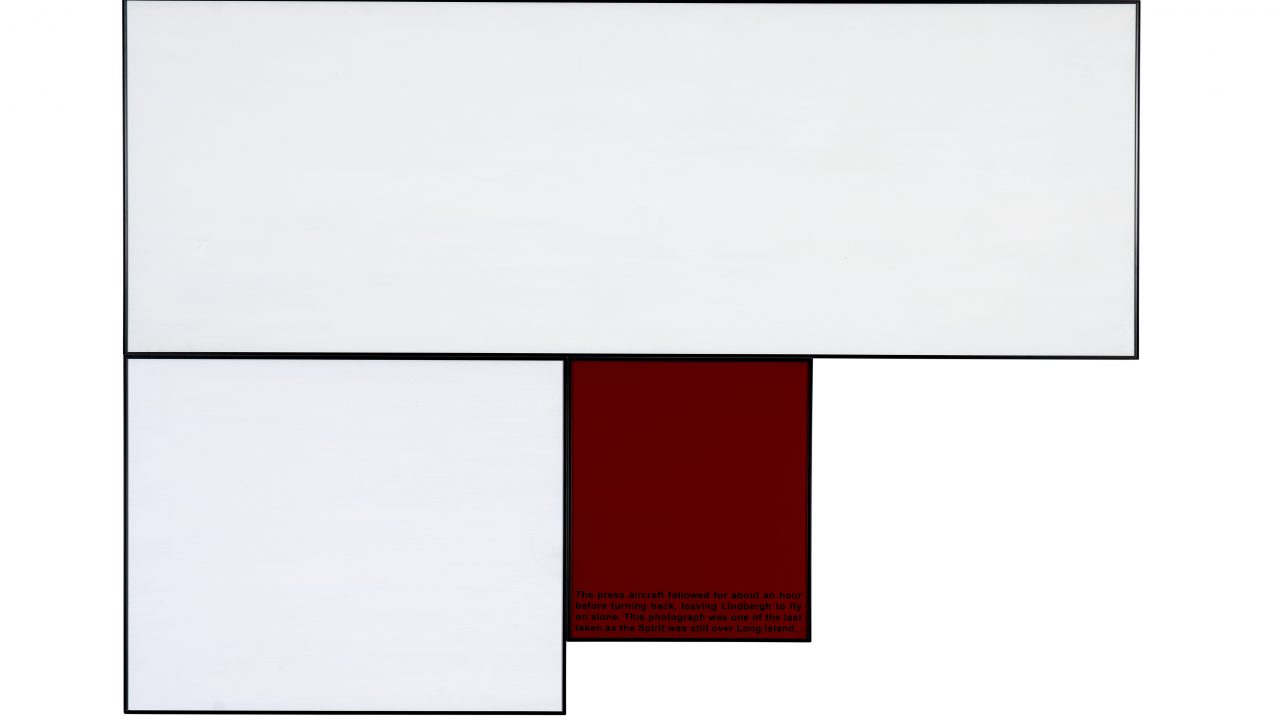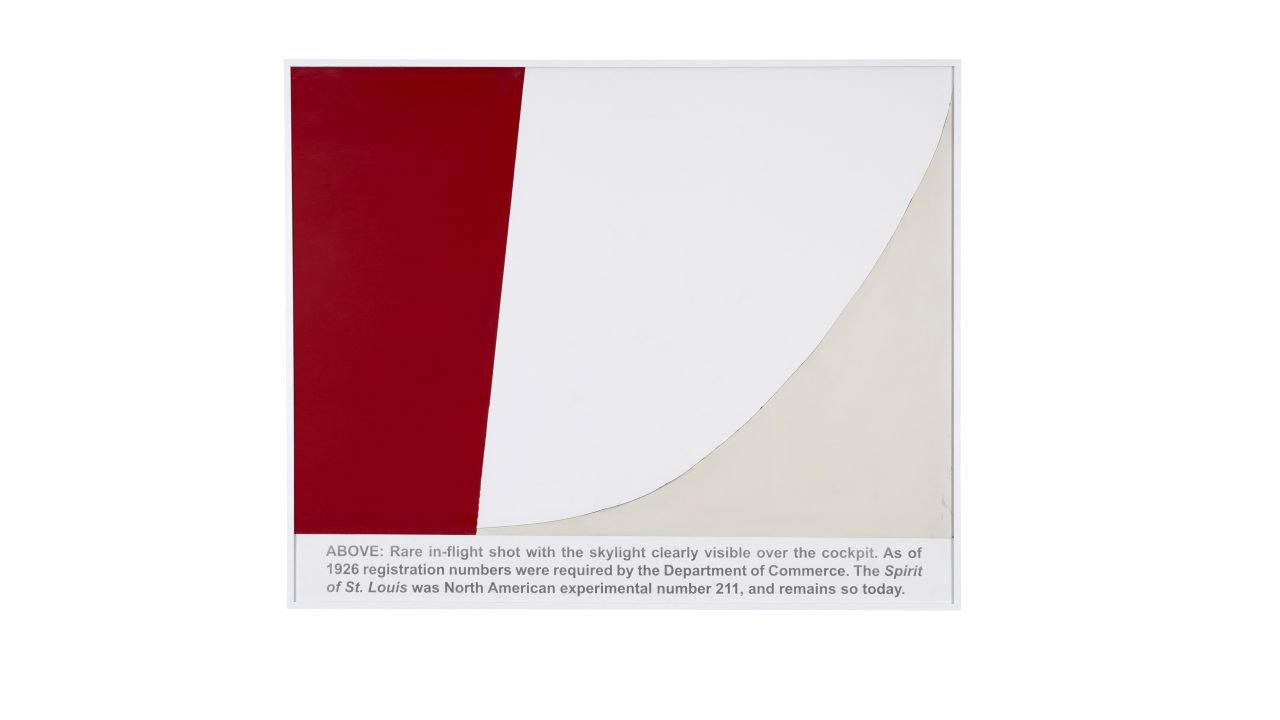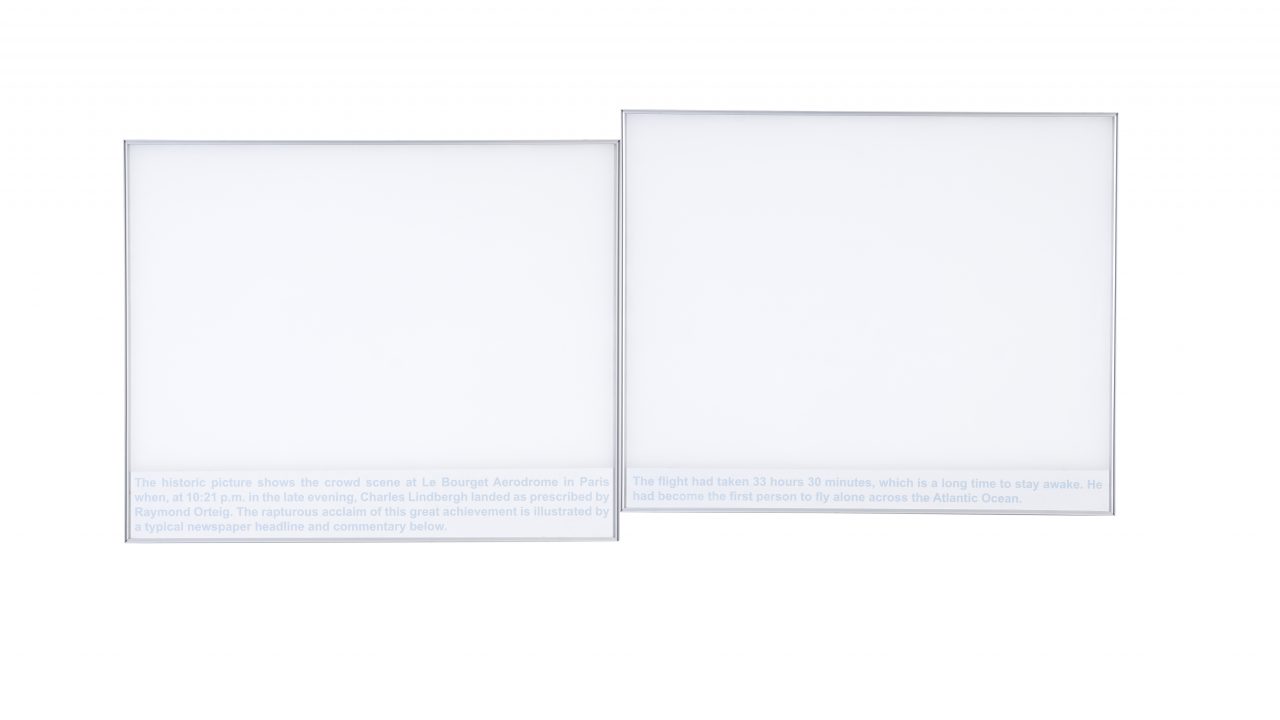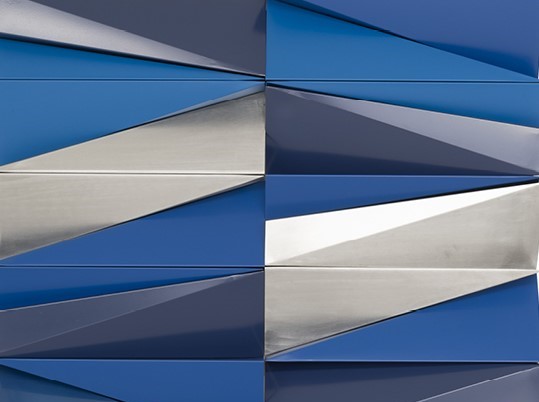A Mosca de Lindbergh
24.01.19 > 16.03.19
Galeria Vera Cortês, Lisbon
This exhibition focuses on Lindbergh and on his solo transatlantic flight from New York to Paris. In the Spirit of Saint Louis, Lindbergh set himself upon one of the greatest human adventures, which was considered by many one of the greatest achievements of humankind. There had been several failed attempts to cross the Atlantic, but the Spirit was the first to connect the two cities, and it’s the starting point to the subject form and content. Lindbergh knew that, to succeed in crossing the ocean, any excess luggage, any extra pilot or equipment, would reduce vital space for fuel while increasing its consumption. The ratio between weight and fuel storage was thoroughly studied, and ended up influencing the Spirit’s design, a plane built from the inside out. There was a content that shaped the form, and that’s my point.
Form is the expression of content. Form is content.
In 1776, James Watt invented the steam engine, which in turn triggered the Industrial Revolution. The world changed and kept changing rapidly after that invention. The factory was born, the exodus to the urban centres, the proletariat, child labour, the social disintegration in a still fragile life, based on a feudal and colonial system that looked upon labour and profit with tenacity and severity. Everything was used to increase productivity and child labour was one of the main resources. One of the main tasks children were encumbered with was the maintenance and cleaning of the small spaces in the machines, which were out of reach for adults. In the textile industry, the scavengers were tasked with picking the cotton leftovers from the floor, and cleaning the oil and grease that dripped from the machines. The piercers would repair the broken threads while the wheels spun over. This was one of the most dangerous jobs in the textile industry, and there were many accidents. After many cuts, broken limbs, mutilations and deaths, there were several recommendations that advised the industrials to cover the machines, in order to avoid more disasters. Design was born when the first cover was placed over a machine. The last layer of content is its visible expression. Form becomes content. It is the skin that connects it to the exterior world, it is its last instance.
When Adolf Loos wrote his book Ornament and Crime, in 2008, he was addressing this issue. Form should follow function (Louis Sullivan) and should be limited to that condition. Everything else is ornament — and expendable. Form should not follow tradition or whim, it should be always function.
Developed by Lindbergh, the monoplane Spirit of Saint Louis was a good example of this notion. Lindbergh was an experienced pilot working for the U.S. Air Mail and spent many hours flying solo. He accepted the challenge of an American entrepreneur, Raimond Orteig, who offered the Orteig Prize, a $25.000 reward to the first pilot connecting New York to Paris. Before Lindbergh, other pilots had tried the feat, like René Fonck, an ace of French aviation at the time. All failed. When Lindbergh was preparing the flight, he discussed the plane with his designers and engineers: to avoid excess weight, there would be only one pilot; the chair in the cockpit should be uncomfortable, made from wicker, with no springs and not adjustable, in order to avoid sleepiness in what would be a long flight; there would be no front glass pane, to avoid the monotony of a long flight over the sea and to gain extra space for the main fuel tank; finally, he asked them to introduce a fly into the cockpit, the insect would make him company, but it would also annoy him, preventing him from falling asleep during the thirty-hour-long journey (he completed the flight in 33 hours and 31 minutes).
These were the requirements that produced the final layer of the content. The plane’s final form, shaped by Lindbergh’s ideas, produced the exterior appearance of the airplane, which was weird and unprecedented at the time. There was no excess. The Spirit’s final form was the product of all that content overlapping.
Its skin was the expression of that content.
A exposição fala de Lindbergh e do voo solitário que atravessou o Atlântico, de Nova Iorque a Paris. A
A forma é a expressão do conteúdo. A forma é o conteúdo.
Quando Adolf Loos
O avião monolugar Spirit of Saint Louis, desenvolvido a partir das ideias de Lindbergh, é um bom exemplo. Lindbergh era um piloto experiente, trabalhava nos correios aéreos americanos, e contava com muitas horas de voo solitárias. Aceitou o
Alguns pilotos antes de Lindbergh já o tinham tentado, como foi o caso de René Fonck, um ás da aviação francesa na altura. Todos fracassaram. Quando Lindbergh se lançou no desafio, identificou e discutiu com os seus projectistas e engenheiros uma série de requisitos que queria para o seu avião: para
Foram estes os requisitos que produziriam a última camada do conteúdo. A forma final do avião, determinada pelas ideias de Lindbergh, produziriam a aparência da aeronave, uma aparência estranha e inédita à época. Nada
A sua pele era a expressão desse conteúdo.





![SMUGGLING [solo show]](https://joaolouro.com/wp-content/uploads/2016/11/05-720x540.jpg)

![IF WE WANT THINGS TO STAY AS THEY ARE, THINGS WILL HAVE TO CHANGE [solo show]](https://joaolouro.com/wp-content/uploads/2011/05/appleton-square-720x540.jpg)
![PLAY, REC AND PAUSE [solo show]](https://joaolouro.com/wp-content/uploads/2006/09/IMG_2163-720x540.jpg)